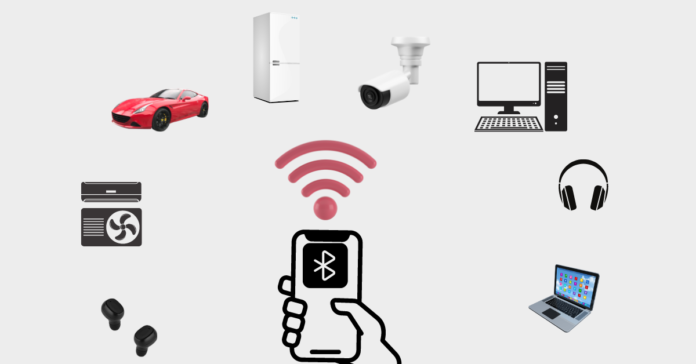In this age of digital communication, Bluetooth technology has been incorporated into hearing aids, thus making users benefit immensely from connectivity and accessibility as they interact with the world of sound. This wireless technology protocol allows for smooth audio streaming between hearing aids and a wide array of compatible devices, such as smartphones and televisions, which imparts a new era of accessibility and convenience for hearing impaired people.
Understanding Bluetooth Integration in Hearing Aids

What is Bluetooth technology?
Bluetooth is a wireless standard that delivers connectivity between devices over short distances and enables information exchange. Bluetooth enables the delivery of audio signals from external devices directly to users’ hearing aids, eliminating the need for additional cables or extra devices.
How Bluetooth Works in Hearing Aids
The Bluetooth-compatible hearing aids use radio waves to create a link with devices that are passively compatible to hear the audio content in real time and stream it directly into their hearing aids. The flawless fusion makes the music output more presentable with quality music and encourages the use of a hearing device in varying situations.
Types of Bluetooth in Hearing Aids

There are two main types of Bluetooth technologies employed in hearing aids: “classic” Bluetooth and “low energy” (LE) Bluetooth. The Classic Bluetooth is famous for its long-distance range and high power use, whereas the LE Bluetooth targets energy consumption, which is helpful for portable devices such as hearing aids.
Pros and Cons of Bluetooth Hearing Aids
| Pros | Cons |
| Hands-Free Operation | Battery Drain: Continuous Bluetooth streaming may lead to faster battery consumption in hearing aids. |
| Enhanced Accessibility | Compatibility Issues: Some older devices may not be compatible with Bluetooth-enabled hearing aids. |
| Personalized Listening Experience | Cost: Bluetooth-enabled hearing aids may be more expensive than traditional models. |
| Improved Sound Quality |
Benefits of Bluetooth Hearing Aids
1. Personalized Listening Experience
The Bluetooth technology empowers the listeners to have their preferred audio settings ranging from volume levels, audio sources, and next settings to fine-tune their listening to their taste.
2. Hands-Free Operation
The Bluetooth technology incorporated in hearing aids makes it possible for users to opt for the hands-free mode, thus facilitating continuous audio streaming and communication without having to touch the hearing aid or make any adjustments manually.
3. Enhanced Connectivity
Those Bluetooth-enabled devices now give people easier access to a wide extent of audio content from phones, tablets, personal computers, and even television sets, which leads to a better auditory experience.
4. Improved Sound Quality
Through streaming audio straight to their hearing aids, users get to experience clean and clear sound that is free from any interference or distortion, thus giving them a heightened experience.
Understanding Bluetooth Types in Hearing Aids

1. Classic Bluetooth vs. Bluetooth Low Energy (LE)
- Classic Bluetooth offers an extended range and higher power consumption, making it suitable for connecting larger audio devices.
- Bluetooth Low Energy (LE): Designed for energy efficiency, LE Bluetooth is ideal for use in portable devices such as hearing aids, providing extended battery life and optimized performance.
Future of Bluetooth in Hearing Aids
The future of Bluetooth technology in hearing aids seems to be a formidable one, with advancements such as Auracast, a new Bluetooth protocol dedicated to making group audio experiences even better in public locations, expected to continue to explore the potentials of this technology.
Compatibility with Smart Devices

1. Made for iPhone™ Hearing Aids
Specific hearing aids are made to be especially compatible with Apple’s products, such as the iPhone, and optimized for iOS devices.
2. Android Compatibility
Many conventional hearing aids now feature Bluetooth interfaces with Android-based phones and tablets so that the user can enjoy universal accessibility and compatibility.
Conclusion
Bluetooth technology takes the place of the old analogue models because it empowers users not only with connectivity and convenience but also with the unprecedented ability to customize hearing aids. The implementation of Bluetooth-enabled hearing aids is accompanied by both pros and cons, but in the end, they constitute a good stride to improve the way of life for people with hearing loss, giving them the power to connect with and engage with a world that is full of sounds.
FAQs
Can Bluetooth help me watch TV?
Yes, Bluetooth-enabled hearing aids allow users to stream audio directly from their televisions, providing a more immersive and enjoyable viewing experience.
Does streaming cause my battery to drain faster?
Continuous Bluetooth streaming may lead to faster battery consumption in hearing aids, although modern devices are designed to optimize battery life and performance for extended use.
Can Bluetooth help me hear conversations better?
Bluetooth-enabled hearing aids can improve speech clarity in noisy environments, thanks to remote microphone accessories and advanced noise reduction technologies.
How do I connect my hearing aids to other devices with Bluetooth?
Connecting Bluetooth-enabled hearing aids to compatible devices is a straightforward process that involves pairing the devices through their respective Bluetooth settings.
What if I don’t have Bluetooth in my hearing aids?
For users without built-in Bluetooth capabilities, external streamers and accessories can be used to enable wireless connectivity with compatible devices, providing a cost-effective solution for enhancing accessibility and functionality.


